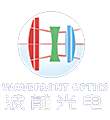Shortwave infrared
Key words:
Near-infrared (SWIR) light is generally defined as light in the wavelength range of 0.9-1.7 μm, but it can also be classified into the wavelength range of 0.7-2.5 μm. Indium gallium arsenide (InGaAs) sensors are the main sensors used in SWIR and can cover typical SWIR bands. Wavefront’s SWIR series lenses are fixed focal length lenses designed for short-wave infrared cameras and infrared applications.
SWIR imaging is widely used in a variety of different applications, including security monitoring, electronic board inspection, solar cell inspection, production inspection, identification and sequencing, monitoring, anti-counterfeiting, process quality control, etc.
Wavefront has the highest standard of mass manufacturing and assembly capabilities, and has extensive experience in designing, manufacturing and plating near-infrared imaging lenses. Wavefront provides lens components of ordinary glass design. These glasses are optimized for short-wave infrared spectral performance, and our specially designed short-wave infrared antireflection coating is used for the maximum transmittance of near-infrared wavelengths, which can effectively transmit visible light and near infrared Infrared, and short-wave infrared light, to ensure that in clear day, fog, smoke, dust, dawn and dusk and other conditions, high-quality clear images can be obtained.
The main characteristics of wavefront SWIR lens:
1. In the 700-1900nm band, there are three focal lengths of 12mm, 25mm, and 50mm to choose from;
In the 900-2500nm band, there are three focal lengths of 17mm, 25mm, and 85mm to choose from;
2. Special coating, the use of ED glass ensures the best image quality;
3. The smallest F#1.4;
4. The chip that can accommodate up to 1";
5. In the 700-1900nm band, the transmittance>75%; in the 900-1700, the transmittance>80%;
6. Large field of view and low distortion.
Previous Page
Next Page
Previous Page
Next Page






